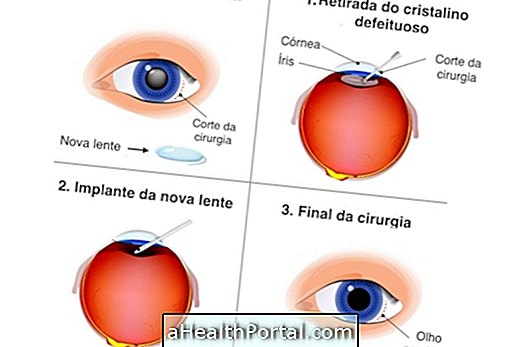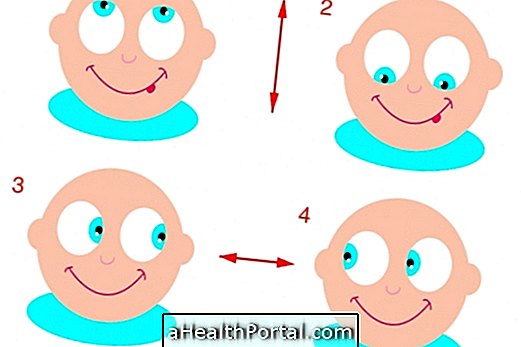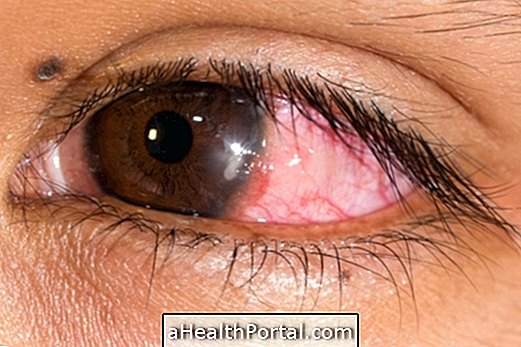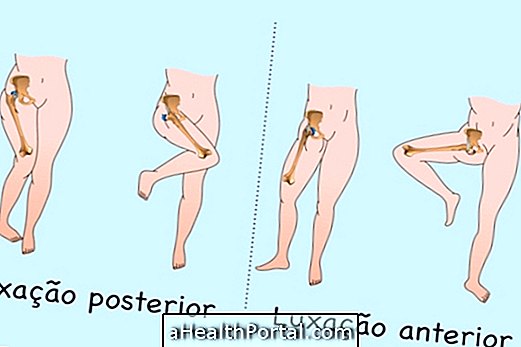Color blindness, known scientifically as achromatopsia, is an alteration of the retina that can happen in both men and women and that causes symptoms such as decreased vision, excessive sensitivity to light and difficulty seeing colors.
Unlike color blindness, in which the person cannot distinguish some colors, achromatopsia can totally prevent from observing other colors besides black, white and some shades of gray, due to a dysfunction present in the cells that process the light and the vision of the color, called cones.
Generally, color blindness appears since birth, since its main cause is a genetic alteration, however, in some rarer cases, achromatopsia can also be acquired during adulthood due to brain damage, such as tumors , for example.
Although achromatopsia has no cure, the ophthalmologist can recommend treatment with the use of special glasses that help improve vision and mitigate symptoms.
-o-que--como-identificar-e-o-que-fazer.jpg)
Vision of a person with complete achromatopsia
Main symptoms
In most cases, symptoms may start to appear in the first weeks of life, becoming more evident with the child's growth. Some of these symptoms include:
- Difficulty opening your eyes during the day or in places with a lot of light;
- Eye tremors and oscillations;
- Difficulty seeing;
- Difficulty learning or distinguishing colors;
- Black and white vision.
In more severe cases, rapid eye movement can also occur from side to side.
In some cases, the diagnosis can be difficult as the person may not be aware of their situation and may not seek medical help. In children it may be easier to perceive achromatopsia when they have difficulty learning colors at school.
What can cause achromatopsia
The main cause of color blindness is a genetic alteration that prevents the development of the cells, of the eye, that allow to observe the colors, known as cones. When the cones are completely affected, achromatopsia is complete and, in these cases, it is only seen in black and white, however, when the change in the cones is less severe, the vision can be affected but still allow to distinguish some colors, being called partial achromatopsia.
Because it is caused by a genetic change, the disease can pass from parents to children, but only if there are cases of achromatopsia in the family of the father or mother, even if they do not have the disease.
In addition to genetic alterations, there are also cases of color blindness that arose during adulthood due to brain damage, such as tumors or taking a drug called hydroxychloroquine, which is generally used in rheumatic diseases.
How the diagnosis is made
The diagnosis is usually made by an ophthalmologist or pediatrician, just by observing the symptoms and color tests. However, it may be necessary to do a vision test, called an electroretinography, which allows you to assess the electrical activity of the retina, being able to reveal whether the cones are working properly.
How the treatment is done
Currently, this disease has no treatment, so the goal is based on relieving symptoms, which can be done with the use of special glasses with dark lenses that help improve vision while decreasing light, improving sensitivity .
In addition, it is recommended to wear a hat on the street to reduce the brightness over the eyes and avoid activities that require a lot of visual acuity, as they can tire quickly and cause feelings of frustration.
To allow the child to have a normal intellectual development, it is advisable to inform teachers about the problem, so that they can always sit in the front row and offer material with large letters and numbers, for example.
Was this information helpful?
Yes No
Your opinion is important! Write here how we can improve our text:
Any questions? Click here to be answered.
Email in which you want to receive a reply:
Check the confirmation email we sent you.
Your name:
Reason for visit:
--- Choose your reason --- DiseaseLive betterHelp another personGain knowledge
Are you a health professional?
NoMedicalPharmaceuticalsNurseNutritionistBiomedicalPhysiotherapistBeauticianOther




-o-que--como-identificar-e-o-que-fazer.jpg)



















